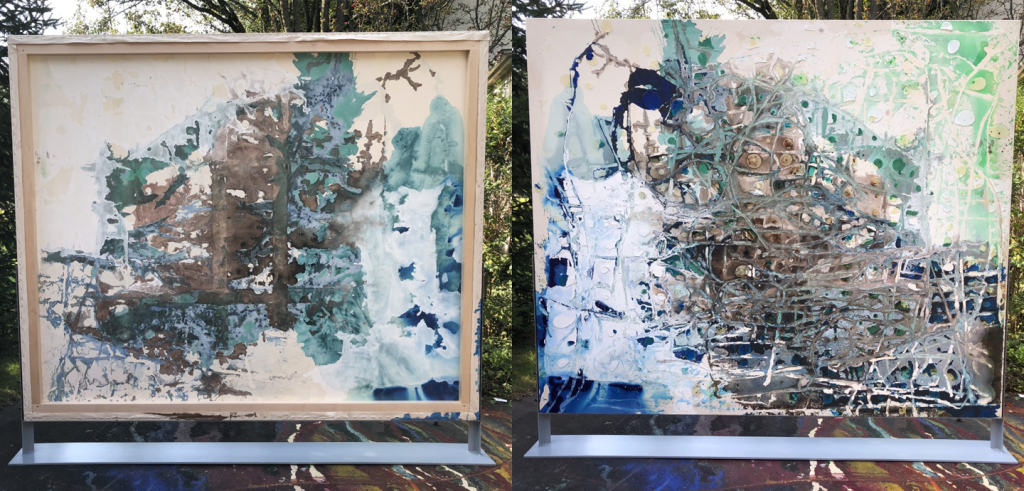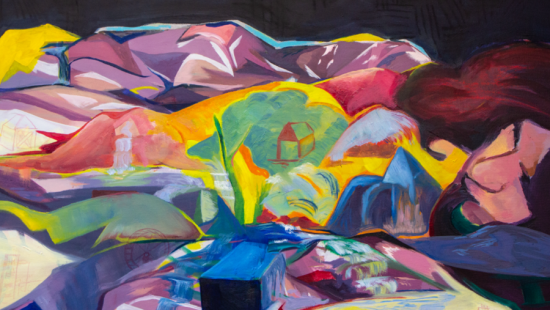Dona Nelson: The Figure in Paint, Figures in Paintings, Figures Looking at Paintings

First Painting (summer 2021), acrylic on canvas, 88" x 108", back (left) and front (right). photo / Gary Donnelly
Bio
For more than fifty years, Dona Nelson (they/them) has made series of different kinds of paintings, distinguished by a variety of approaches to both image and material.
Nelson was born in Grand Island, Nebraska, in 1947. They received a B.F.A. from Ohio State University (1968) and studied at the Whitney Museum Independent Study Program (1967). They are a Professor of Painting and Drawing at the Tyler School of Art, Temple University, Philadelphia, where they have worked since 1992. Their paintings are included in museum collections such as The Carnegie Museum of Art, The Whitney Museum, The Boston Museum of Fine Arts, The Pompidou, the Metropolitan Museum of Art, and The Museum of New South Wales in Australia. Among other grants, they received a Guggenheim Fellowship in 1994, and in 2011 they received a grant from the Foundation for Contemporary Arts.
Abstract
In the late 1960s and 1970s, after Abstract Expressionism and Minimalism, many artists and critics considered the inventive aspect of large-scale abstract painting to be "dead," saying that painting could "now" only be approached ironically, with an eye on the art market, essentially reducing the painter's role to that of a high-end commodity producer and greatly enhancing the art dealer's creative role.
Young people who want to paint in 2022 need to know that large-scale painting is rich with possibilities for material invention and that material invention is the first step to rethinking painting conceptually.
For me, this conceptual rethinking of large-scale abstract paintings necessitated a rethinking of typical late 20th-century gallery conventions surrounding the display of paintings. I wanted to activate the position of the art viewer. For many of the abstract expressionists, making big paintings with their whole bodies challenged the conventions of easel painting. I wanted the physical aspect of viewers walking around, looking at my two-sided paintings, to activate my paintings. I do not think that big paintings can satisfactorily be experienced in photographs.





